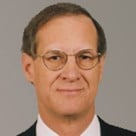Everyone is obviously happy that rates remain historically low and are likely to stay there for quite awhile. It allows better pricing for debt than we all would have anticipated. Banks are able to compete heavily for major property loans on the best assets with the best borrowers at rates that few of us would have expected a few months ago. So long as bank lending in general is at low levels and banks can take deposits and borrow at record low levels, they will continue to pose a competitive challenge to CMBS lenders for the better quality deals. They also offer borrowers better flexibility and servicing.
What seems to be happening is many people are not sufficiently considering that rates will be rising during the hold period for most assets. At some point the Fed will end its bond buying program, and will start to need to sop up the excess liquidity in order to prevent another bubble. The economy will recover and the combination of Fed tightening and reductions in money supply, will join with rising rates to present a possibly different borrowing market. In three or four years, when investors might be considering selling or refinancing, the debt market could look very different. Underwriting is likely to continue to be conservative, and LTV is likely to remain in the 65%-75% range and be based mainly on cash flow. If rates have moved up by say 250-300 basis points on the 10 year, then proceeds to a new buyer at that time will probably constrain what price he can justify. Rents will have stabilized and hopefully be rising again, but new long term leases for office and retail will have been signed in the interim at today’s lower rates. In short, it is hard to properly project what debt will be for a buyer in three to four years, and where inflation will be, so it is very hard to accurately figure out terminal values at that time in any model done today. It is likely best to use a range of values and determine if being in that range still provides a justifiable return. Making an assumption that there will be large value increases and plenty of cheap capital is not likely to provide an accurate estimation of the validity of the investment under consideration.
Core returns seem to be settling in around 7.5%-8.5%. Returns on other assets are sloping upward from there. Most serious investors are taking the approach that there are so many unknowns right now, that it is not a time to be going way out on the risk curve. What will happen in the next Congress, will Greece default again (likely), what will Dodd Frank and Elizabeth Warren do to bank earnings and ability to make loans, will there be another terror incident, will the Fed overdo bond buying, what effect will the restructuring of the rating agencies have on CMBS issuance, will Israel attack Iran, will the decline of the dollar cause major inflows of foreign capital, will inflation spike in three years, will Obamacare be revised or declared unconstitutional, what will happen to the refi of the $1.5 trillion of CRE loans maturing in the next few years, how long before the residential mortgage mess if clarified. Clearly there are many black swans circling and any of them could cause major disruption. As a result, the smart investors are seeking solid buys even if they are buying distressed paper. They are shooting for a 15% all in return and no longer are looking at trying to achieve 20%+. They are keeping leverage at manageable levels and not betting on big jumps in projected cash flows to make the loans work.
It remains a time to be careful and stick to fundamentals, and to remain keenly aware of the world outside and events which will shape capital markets and values. The administration is not business friendly nor capital markets attuned, and that is not going to bode well for values.
© Touchpoint Markets, All Rights Reserved. Request academic re-use from www.copyright.com. All other uses, submit a request to [email protected]. For more inforrmation visit Asset & Logo Licensing.







